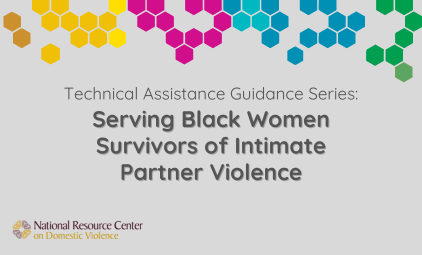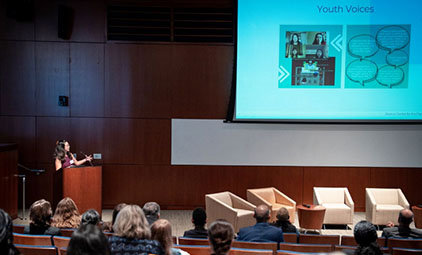Pioneering interventions for men who batter need to be based on clear principles and guidelines that protect the safety and well-being of women and children. Such considerations are outlined in a companion paper entitled Parenting Interventions for Men who Batter. Also important are considerations about the practicalities of service provision, including questions about program length and organization, referral routes, specific program content, and nature of collaboration between agencies. Lessons learned from parenting, fathering, batterer, and child protective interventions are the basis for offering practical recommendations for parenting programs for batterers.
Recruitment
Referral routes can be organized through the criminal court system, child-protection professionals, or family court. But is not enough to simply invite fathers to established services: very few fathers come (Phares, Fields, & Binitie, 2006; Rimm-Kaufman & Zhang, 2005). Literature on fatherhood programs and parent training offer recommendations for recruiting and retaining men in services (e.g. Lengua, Rose, Schupak-Neuberg, Michaels, Berg, & Weschler, 1992; Pruett, Cowan, Cowan & Pruett, 2009), including:
- Make programs father-friendly. Agencies may have the most success in engaging fathers in programs that are designed specifically for men or father-child dyads.
- Use teaching methods and materials that are appropriate for fathers and for the cultures of the populations being served.
- Use incentives to engage fathers and families, such as meal and bus tickets, cash, and agency-wide reinforcement of the expectation that fathers be involved in services (Burges, 2009; Bronte-Tinkew et al., 2007).
- Consider mandating treatment. Mandates are not associated with lower treatment efficacy, and may in fact reduce drop-out rates and increase compliance (Skowron & Reinemann, 2005).
- Be creative with outreach and emphasize the benefits of menÕs engagement in intervention (Burgess, 2009). For example, recruit during an identified transition (new father, application to the court for divorce) or a problem (incarceration, previous drug use) (Bronte-Tinkew et al., 2007).
Program Organization
The literature on parent training and fatherhood programs also has direct relevance for the organization of parenting programs for men who batter. The following recommendations can be made:
- Include a mix of behavioral and attitudinal components (Skowron & Reinemann, 2005; Lundahl et al., 2006).
- Use a combination of group and individual sessions to assure comprehensive treatment (Lundahl et al., 2006; Bronte-Tinkew et al., 2007).
- Lengthen the duration of treatment time (ie. a minimum of two to three months) (Bronte-Tinkew et al., 2007; Lundahl et al., 2006).
- Work with a targeted replicable curriculum that has a clear theoretical foundation (Bronte-Tinkew et al., 2007).
- Select teachers and facilitators with experience and relevant training (Bronte-Tinkew et al., 2007).
Program Content
Many existing parenting interventions for men who batter focus less on content typically covered in parent training programs, and more on themes developed by batterer service providers: effects of domestic violence, accountability for past abuse, and changing menÕs abuse-supporting attitudes. A review of the literature on child maltreatment and menÕs abuse of women yields the following recommendations for program content:
- Focus on reducing over-reactivity/anger/hostility in parenting (Stith et al., 2009; Eckhardt, Samper, & Murphy, 2008), using a complex view of the role of anger in family violence (Gondolf, 2007; Gondolf & Russell, 1986).
- Teach strategies for respectful parenting, co-parenting, or parallel-parenting with their childrenÕs mothers; continued conflict between mothers and fathers is associated with negative outcomes for children (Katz & Low, 2004; Wolfe, Crooks, Lee, McIntyre-Smith, & Jaffe, 2003).
- Improve the quality of father-child relationships by addressing fathersÕ attitudes and skills. Interventions that build fathersÕ tolerance of challenging behaviors and increase positive engagement with their children help reduce the risk factors for child maltreatment (Bugental et al., 2010; Bugental & Schwartz, 2009; Francis & Wolfe, 2008; Perez-Albeniz & de Paul, 2004).
- Address menÕs abuse of substances as a significant risk factor for both woman abuse and child maltreatment (Jones & Gondolf, 2001).
Collaborative Management of Risk
Improved inter-agency collaboration is one of the most common recommendations of child abuse and domestic violence services (Pennington-Zoellner, 2009; Douglas & Cunningham, 2008; Allen, 2006); this is particularly true of parenting interventions for men who batter. A proportion of clients will likely not benefit from intervention (Klein & Tobin, 2008; Gondolf, 2001; Bennett, Stoops, Call, & Flett, 2007). Containment measures become necessary to ensure the safety of potential victims of abuse, requiring strong communication and coordination across agencies. Recommendations include:
- Shared intake with program referrers. Joint intakes provide a forum for clear communication about the reason for referral and the desired outcome of intervention.
- Regularly scheduled check-ins with referrers. Such contacts must remain focused on assessing, monitoring, and containing risk and avoid drifting into providing advocacy for fathers.
- Thorough follow-up on failed referrals and program drop-outs. Research demonstrates that treatment drop-out is a good predictor of re-assault (Bennet et al., 2007; Gondolf, 2001); in these cases, intervention programs must ensure that appropriate protective measures are in place for all members of the family.
- Organization of and participation in multi-agency case management teams for clients at high levels of risk. While such teams need to be vigilant to issues of confidentiality and protection of information, they can develop comprehensive safety plans and risk management strategies for men and their families.













